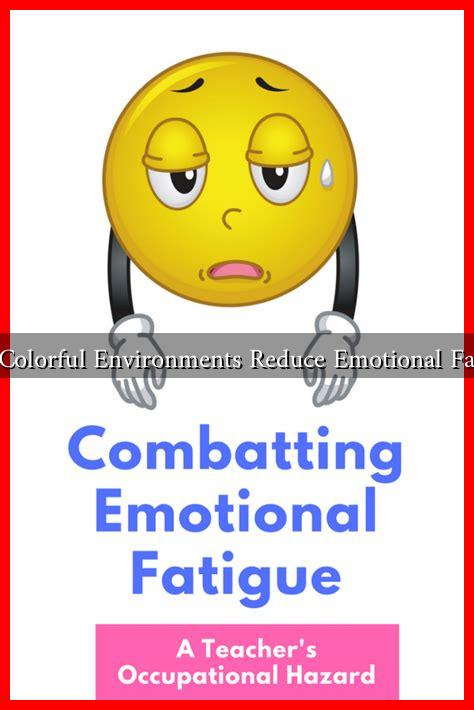-
Table of Contents
Can Colorful Environments Reduce Emotional Fatigue?
Emotional fatigue, often characterized by feelings of exhaustion, detachment, and a lack of motivation, has become increasingly prevalent in our fast-paced, high-stress world. As individuals seek ways to combat this pervasive issue, the role of our surroundings—particularly the colors that fill our environments—has garnered significant attention. This article explores the relationship between colorful environments and emotional fatigue, examining how color can influence mood, productivity, and overall well-being.
The Psychology of Color
Color psychology is a field that studies how colors affect human behavior and emotions. Different colors can evoke various feelings and reactions, making them powerful tools in shaping our environments. Here are some common associations:
- Red: Often linked to energy and passion, red can stimulate excitement but may also increase feelings of aggression if overused.
- Blue: Known for its calming effects, blue can promote tranquility and reduce feelings of anxiety.
- Yellow: Associated with happiness and optimism, yellow can uplift spirits but may also lead to feelings of frustration if too bright.
- Green: Symbolizing nature, green is often linked to balance and restoration, making it a soothing choice for reducing stress.
Understanding these associations can help individuals and organizations create environments that foster emotional well-being and reduce fatigue.
Colorful Environments in Practice
Numerous studies have demonstrated the impact of colorful environments on emotional health. For instance, a study published in the journal “Color and Emotion: A Review of the Literature” found that exposure to vibrant colors can enhance mood and increase feelings of happiness. Here are some practical applications of colorful environments:
- Workspaces: Companies like Google and Facebook have embraced colorful office designs to boost creativity and reduce stress among employees. Bright colors in common areas can foster collaboration and innovation.
- Healthcare Settings: Hospitals and clinics are increasingly using color to create calming environments for patients. For example, children’s hospitals often feature bright, playful colors to reduce anxiety in young patients.
- Home Decor: Individuals can also benefit from colorful home environments. Incorporating vibrant colors through paint, furniture, or artwork can create a more uplifting atmosphere.
Case Studies and Statistics
Several case studies highlight the effectiveness of colorful environments in reducing emotional fatigue:
- A study conducted by the University of Texas found that employees working in colorful offices reported a 20% increase in productivity compared to those in monochromatic settings.
- Research from the University of Exeter revealed that employees in offices with natural elements and colorful designs experienced a 15% increase in well-being and a 6% boost in productivity.
- In a pilot program at a children’s hospital, the introduction of colorful murals and decor led to a 30% decrease in patient anxiety levels during treatment.
These findings underscore the potential of colorful environments to combat emotional fatigue and enhance overall well-being.
Creating Your Colorful Sanctuary
For those looking to reduce emotional fatigue through their surroundings, consider the following tips:
- Choose Your Palette: Select colors that resonate with you personally. Experiment with different shades to find what uplifts your mood.
- Incorporate Nature: Bring in plants and natural elements, as green hues can promote relaxation and balance.
- Use Art and Decor: Invest in colorful artwork or decor that inspires joy and creativity.
- Lighting Matters: Utilize natural light where possible, as it can enhance the vibrancy of colors and improve mood.
Conclusion
Colorful environments have the potential to significantly reduce emotional fatigue by influencing mood, enhancing creativity, and promoting overall well-being. As research continues to unveil the profound effects of color on our emotions, individuals and organizations alike can harness this knowledge to create spaces that foster positivity and resilience. By thoughtfully incorporating color into our environments, we can take meaningful steps toward combating emotional fatigue and enhancing our quality of life.


